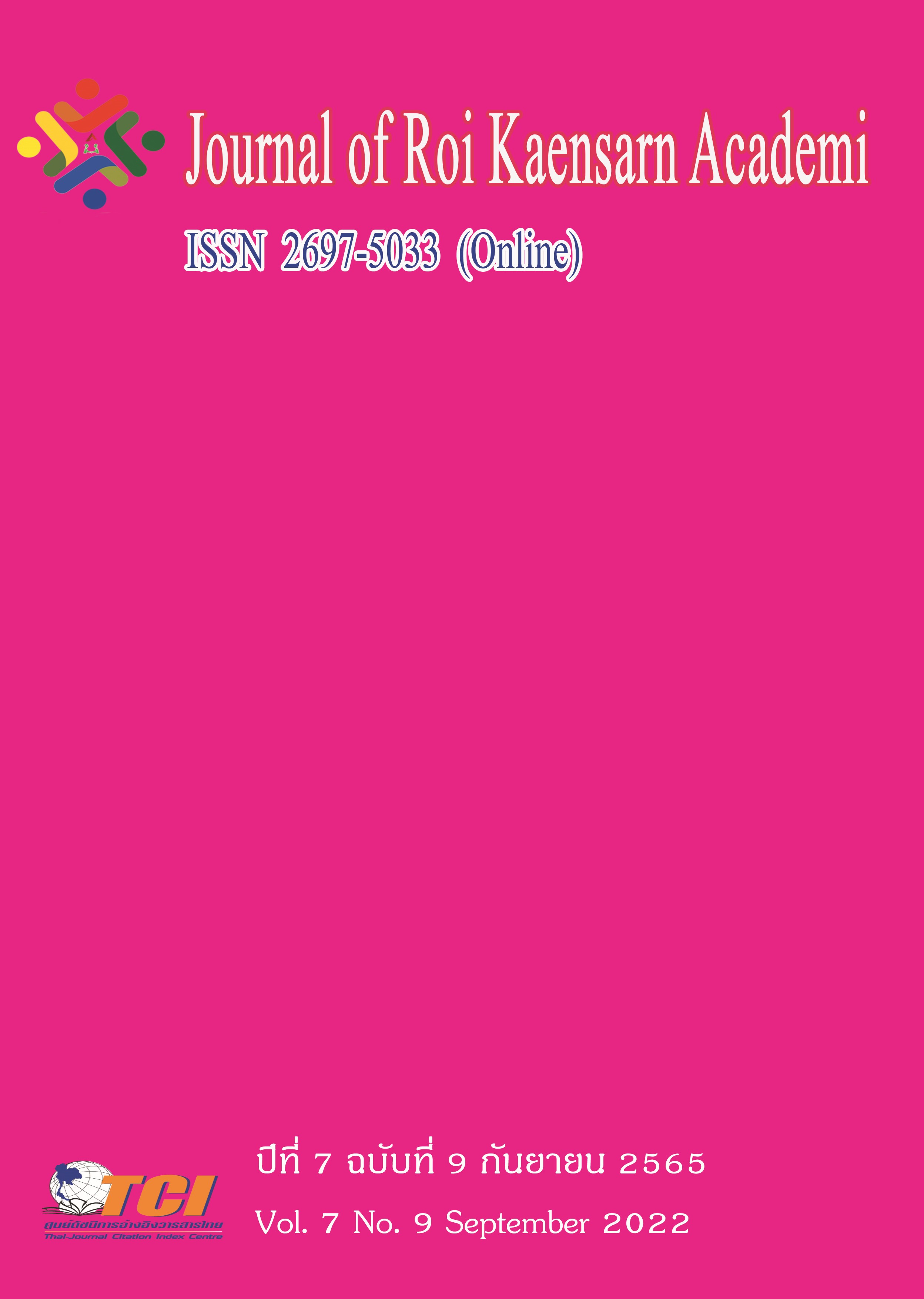Development of Strategic Management Indicators for School Administrators Under the Secondary Educational Service Area Office Nong Khai
Main Article Content
Abstract
This research aims to 1) study the elements of strategic management of school administrators 2) develop strategic management indicators of school administrators 3) analyze the correspondence between the model of structure of developed strategic management indicators of school administrators and empirical data. There are three phases of this research process namely : Phase I Study the elements of strategic management of school administrators. Phase II Develop strategic management indicators of school administrators. Phase III Analyze the correspondence between the model of structure of developed strategic management indicators of school administrators and empirical data. The data were collected from 400 random sampling school teachers and administrators under the Secondary Educational Service Area Office Nong Khai in the academic year 2021, which were randomly selected by using five-level rating scale version questionnaire with Index of Item Objective Congruence (IOC) 0.60-1.00, Discrimination .42-.97 , Reliability of Cronbach’s Alpha Coefficient is equal to 0.99. The collected data were analyzed by using ready-to-use statistical program. The results have been found as follows;
1. The study of the elements of strategic management of school administrators under the Secondary Educational Service Area Office Nong Khai from collected questionnaires of five distinguished people. there are three fundamental and fourteen secondary elements namely: 1) Strategic Planning consisting 2) Strategic Application consisting 3) Strategic Assessment and Control consisting.
2. Strategic management indicators of school administrators consist of three fundamental and fourteen secondary elements with sixty indicators namely: Strategic Planning with twenty-two indicators, Strategic Application with nineteen indicators, and Strategic Assessment and Control with nineteen indicators.
3. Structural Model of strategic management of school administrators under the Secondary Educational Service Area Office Nong Khai Consistent with empirical data Chi - Square = 34.93df = 56 p - value = 0.09 GFI = 0.99 AGFI = 0.98 RMSEA =0.00 CN = 940.32 considering component weights. Implementation of strategy The weight of the composition was 1.01 on the evaluation and control of the strategy, and the weight of the composition of 0.99 on the preparation of the strategy. has an element weight of 0.98, respectively.
Article Details
References
กระทรวงศึกษาธิการ. (2553). หลักสูตรแกนกลางการศึกษาขั้นพื้นฐาน พุทธศักราช 2551. (พิมพ์ครั้งที่ 3). กรุงเทพมหานคร: โรงพิมพ์ชุมนุมสหกรณ์การเกษตรแห่งประเทศไทย.
จุฬาลงกรณ์มหาวิทยาลัย. (2553). การบริหารจัดการที่ดีตามหลักธรรมาภิบาล Good Governance. กรุงเทพ มหานคร: โรงพิมพ์แห่งจุฬาลงกรณ์มหาวิทยาลัย.
ณัฏฐพันธ์ เขจรนันท์. (2552). การจัดการเชิงกลยุทธ์ Strategic Management (ฉบับ ปรับปรุงใหม่). กรุงเทพมหานคร: ซีเอ็ดยูเคชั่น.
ณัฐวัฒน์ พระงาม. (2555). การจัดการเชิงกลยุทธ์ (STRATEGIC MANAGEMENT) . พิษณุโลก : มหาวิทยาลัยพิษณุโลก
ธีรยุส วัฒนาศุภโชค. (2552). การบริหารเชิงกลยุทธ์และการแข่งขัน. กรุงเทพมหานคร: โรงพิมพ์แห่งจุฬาลงกรณ์มหาวิทยาลัย.
เนตรพัณณา ยาวิราช. (2552). ภาวะผู้นำและผู้นำเชิงกลยุทธ์. (พิมพ์ครั้งที่ 7). กรุงเทพมหานคร: ทริปเพิ่ล กรุ๊ป.
นงลักษณ์ วิรัชชัย. (2551). การวิจัยและตัวบ่งชี้คุณธรรมจริยธรรม. กรุงเทพมหานคร: ศูนย์ส่งเสริมและพัฒนาพลังแผ่นดินเชิงคุณธรรม (ศูนย์คุณธรรม) สำนักงานบริหารและพัฒนาองค์ความรู้ (องค์การมหาชน).
พสุ เดชะรินทร์. (2553). รู้ลึกในการปฏิบัติ. กรุงเทพมหานคร: จุฬาลงกรณ์มหาวิทยาลัย
พิบูล ทีปะปาล. (2555). การจัดการเชิงกลยุทธ์: Strategic Management. กรุงเทพมหานคร: โรงพิมพ์อมรการพิมพ์.
มณฑา จำปาเหลือง. (2553). การบริหารการศึกษา : การบริหารเชิงกลยุทธ์. เพชรบุรี: คณะครุศาสตร์ มหาวิทยาลัยราชภัฏเพชรบุรี.
ยูนิเซฟ ไทยแลนด์. (2559). นโยบายห้าประการด้านเด็กและเยาวชนที่รัฐบาลใหม่ควรให้ความสำคัญ. ออนไลน์. สืบค้นเมื่อ 11 พฤศจิกายน 2563. แหล่งที่มา: https://www.unicef.org/thailand/ th/stories/
สุรินทร์ พิศสุวรรณ. (2555). ASEAN อาเซียน รู้ไว้ได้เปรียบแน่. กรุงเทพมหานคร: อมรินทร์.
สุมนรัตน์ สกุลสิริทรัพย์. (2550). การกำหนดกลยุทธ์การเพิ่มการเติบโตของรายได้ในธรุกิจผลิตรายการประเภทสารคดีโทรทัศน์ กรณีศึกษา บริษัทแพลตินั่มครีเอชั่น จำกัด. กรุงเทพมหานคร: มหาวิทยาลัยหอการค้าไทย.
สุพาณี สฤษฎ์วานิช. (2553). การบริหารเชิงกลยุทธ์ แนวคิด และทฤษฎี. กรุงเทพมหานคร: ซีเอ็ดยูเคชั่น.
สำนักงานเขตพื้นที่การศึกษามัธยมศึกษาหนองคาย. (2564). กลุ่มบริหารงานบุคคล. ออนไลน์. สืบค้นเมื่อ 15 เมษายน 2564. แหล่งที่มา: https://www.unicef.org/thailand/th/stories/.
Burstein, L., Oakes. J., & Guiton, G. (1992). Education indicators. In M.C. Alkin (Ed.), Encyclopedia of Educational resrarch. New York: Mac Millan.
Bateman, T. S., & Snell, S. A. (1999). Management: Building Competitive Advantage (4th ed.). Boston: Irwin McGraw-Hill.
Johnstone, J. M. (1981). Indicators of Education System. London: The Ancho Press.
Johnson G., and Scholes, K. (2003). Exploring Corporate Strategy, Texts and Cases. 5th ed. Hemel Hempstead: Prentice Hall.
Nardo, M., Saisana, M., Saltelli, A., and Tarantola, S. (2005). Tools for Composite Indicators Building. Joint Research Centre, European Commission.
Ireland O. D., Hitt, M. A., & Hoskisson, R. E., , Mason, , Strategic Management: Competitiveness and Globalization, (7th Ed.) (Ohio: Thomson/South-Western,2007), 372
Schermerhorn, J. R.Jr. (2002). Management. New York : John Wiley & Sons.
Thompson A. A. (2001). Strategic Management: Concepts and Cases, 12 ed. Toronto: McGraw-Hill.
Wheelen, T. L. & Hunger, J. D. (2006). Strategic Management and Business Policy. (10th ed). New Jersey : Pearson Prentice Hall.

